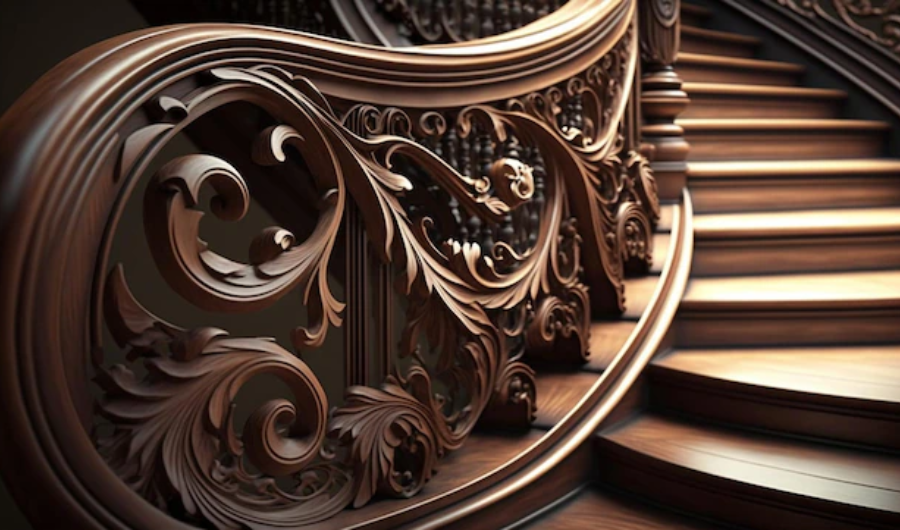Wood carving is an ancient art form that transcends mere aesthetics, carrying deep symbolic meanings that tell stories, evoke emotions, and preserve cultural heritage. From medieval European carvings to African tribal sculptures, each piece reflects history and tradition. Whether you’re exploring wood carving for beginners or refining your craft, understanding its symbolism enhances appreciation. Techniques like wood texture drawing add depth to these creations. In this article, we explore the fascinating world of wood-carved art and interpret the hidden meanings within its intricate details.
The Historical Significance of Wood Carving
Ancient civilizations such as Egypt, Greece, and China used wood carving as a form of artistic expression for centuries. Wooden sculptures were commonly utilized for religious ceremonies, storytelling, and ancestral remembrance. Examples include:
- Religious Icons – Many wooden carvings depict gods, saints, and deities, often believed to hold spiritual power.
- Tribal Art – African and Native American tribes used wooden sculptures to represent spirits, animals, and historical legends.
- Architectural Elements – From intricate doors in Moroccan palaces to hand-carved church altars in Europe, wood carving has played a role in architectural storytelling.
The Diversity of Wood Carving Styles and Methods
Wood carving is a highly versatile art form, embraced by various cultures and traditions. Different styles and techniques reveal distinct symbolism:
- Japanese Art – Emphasizes minimalism, balance, and Zen philosophy.
- African Art – Features exaggerated expressions to convey emotions and societal roles.
- Native American Totem Poles – Represent ancestry, family history, and spiritual connections.
- Chinese Filigree Carving – Highlights intricate patterns with symbolic meanings of luck and prosperity.
By understanding the unique styles and carving methods used by different cultures, we can begin to decipher the layers of symbolism hidden in each artwork.
Nature’s Symbolism in Wood Carving
Nature plays a significant role in wood-carved sculptures, often representing life, rebirth, and interconnectedness. Common motifs include:
- Trees – Symbolize endurance, wisdom, and tradition.
- Animals – Serve as totems with cultural significance:
- Owls – Represent wisdom and knowledge.
- Lions – Symbolize strength and leadership.
- Dolphins – Found in coastal cultures, representing harmony and guidance.
Spiritual and Religious Symbolism in Wood Carving
Religious and spiritual beliefs are deeply intertwined with many wood-carved artworks. Examples include:
- Buddhist and Hindu Sculptures – Often depict deities using specific hand gestures (mudras) to convey teachings.
- Christian Altarpieces – Showcase biblical stories and divine figures.
- Mystical Creatures – Angels, demons, and celestial beings symbolize protection, faith, and spiritual enlightenment.
Wooden sculptures provide a visual medium to express devotion and explore the divine, allowing artists to tell spiritual stories that transcend time.
Social and Political Commentary in Wood Carving
Beyond spiritual and natural themes, wood carving has also been used as a form of social and political expression. Artists have historically carved:
- Political Statements – Exposing social injustices and human struggles.
- Satirical Figures – Offering commentary on historical events and societal issues.
- Emotional Depictions – Conveying messages of hope, resilience, and struggle through human expressions and postures.
Wood Carving as a Personal Expression
In addition to cultural and societal themes, wood-carved art serves as a medium for personal storytelling. Artists often explore emotions, personal experiences, and philosophical ideas through their work. A seated, meditative figure may express inner peace, while a warrior stance might symbolize courage and determination.
Preserving Cultural Heritage Through Wood Carving
In an era of rapid globalization, wood carving remains an essential practice for preserving cultural heritage. Many communities continue to pass down carving techniques and artistic traditions from one generation to the next. This ensures that stories, customs, and artistic legacies remain intact, keeping the spirit of ancient craftsmanship alive.
Choosing the Right Wood-Carved Piece for Your Space
When selecting wooden sculptures for home decor, consider their meaning and personal connection. Whether it’s an abstract carving for a modern aesthetic or an animal figure for a rustic feel, each sculpture embodies history and artistry. Those interested in experimenting with their own creations can explore wooden sculpting to craft meaningful pieces.
Final Thoughts
Wood carving is more than an artistic pursuit—it is a storytelling medium that reflects history, spirituality, and cultural identity. Whether displayed in museums or incorporated into DIY home decor, these sculptures carry deep symbolic meaning. By understanding the hidden messages within wood-carved art, we can gain a deeper appreciation for its timeless significance and enduring influence on generations to come.

